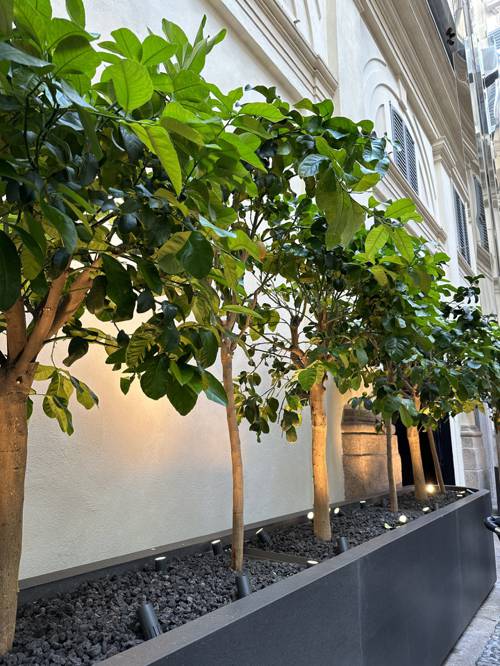
FAQ About Indoor Plant Soil Oxygenation

Why is soil oxygenation important for indoor plants?
Soil oxygenation is crucial for indoor plants because their roots require oxygen to effectively absorb nutrients and water. Proper oxygen levels in the soil stimulate root growth and overall plant health. Without adequate oxygen, roots can suffocate, leading to poor nutrient uptake, disease susceptibility, and even plant death.

How does compacted soil affect oxygen levels in indoor plant pots?
Compacted soil can significantly reduce the availability of oxygen to plant roots. When soil is dense, there are fewer air spaces, which impedes the flow of air and water. This lack of oxygen can slow down plant growth, limit nutrient absorption, and increase the risk of root diseases like rot.

What are the signs of poor soil oxygenation in indoor plants?
Signs of poor soil oxygenation include yellowing leaves, slow growth, wilting, and stunted root development. These symptoms occur because the roots are unable to effectively take up water and nutrients, leading to stress and overall plant decline.

What materials can improve soil oxygenation for indoor plants?
Incorporating materials like perlite, pumice, and coarse sand into potting soil can improve soil oxygenation. These materials help increase air spaces within the soil, enhancing drainage while allowing roots to access oxygen more easily.

How often should I aerate the soil of my indoor plants?
Aerating the soil of indoor plants should be done every few months or when you notice signs of compaction, such as decreased water absorption or slow growth. Regularly fluffing the soil gently with a tool or finger can help maintain good oxygen levels.

Can overwatering affect soil oxygenation for indoor plants?
Yes, overwatering can significantly affect soil oxygenation by filling soil pores with water, thereby displacing air. This can suffocate the roots and lead to issues like root rot. It's important to allow the soil to dry out between waterings to maintain proper oxygen levels.

What is the role of microorganisms in soil oxygenation?
Microorganisms in the soil play a critical role in maintaining soil structure and porosity, which affects oxygen availability. They help decompose organic matter and contribute to soil fertility, which indirectly promotes better oxygenation for plant roots.

How can I tell if the soil in my indoor plant pot needs more oxygen?
If you notice signs like poor drainage, a soggy surface, or a foul smell emanating from the soil, it may be time to address oxygenation. These signs indicate that there isn’t enough air flow in the soil, affecting root health and plant vitality.

What tools can be used to aerate soil for indoor plants?
Simple tools such as a chopstick, a fork, or commercial soil aerators can be used to carefully poke holes into the soil, improving air circulation and facilitating better oxygenation of the roots.

Are there any plants that can thrive in low oxygen soil conditions?
Some indoor plants, like snake plants (Sansevieria) and pothos (Epipremnum aureum), can tolerate lower oxygen levels due to their hardy nature. However, they still require some level of oxygenation for optimal growth, so maintaining good soil conditions is beneficial for all indoor plants.

What is the best type of potting soil for indoor plant soil oxygenation?
A light, well-draining potting mix is ideal for indoor plant soil oxygenation. Look for potting soils that contain components like peat moss, vermiculite, perlite, or coconut coir, which help promote air circulation and prevent compaction.

How does temperature affect soil oxygenation for indoor plants?
Higher temperatures can reduce soil oxygen levels as warm water holds less oxygen than cold water. This is why it is essential to avoid overheating your indoor plants and ensure they have proper ventilation and are not situated near heat sources.

Can using pots with drainage holes help with soil oxygenation?
Yes, pots with drainage holes are crucial for maintaining good soil oxygenation as they allow excess water to escape, preventing waterlogging and promoting better airflow to the roots.

What are some mistakes to avoid for maintaining soil oxygenation in indoor plants?
Common mistakes include overwatering, using heavy garden soil instead of specialized potting mix, and neglecting to check for compaction. These can lead to reduced oxygen availability and should be avoided to maintain healthy plant growth.

How do root-bound plants affect soil oxygenation?
Root-bound plants may have limited space in their pots, which can lead to reduced oxygen levels as roots take up much of the soil volume, leaving less room for air. Repotting into a larger container can help improve oxygenation and promote healthier growth.

How can I test the oxygenation level of my indoor plant soil?
Although there are no direct consumer-grade tools to measure soil oxygen levels, observing the plant’s general health and checking drainage rates can give a good indication. If soil remains sodden after watering or plants show stress signs, oxygen levels might be low.

Is mulching beneficial for soil oxygenation in indoor plants?
Using organic mulch can be beneficial as it improves soil structure and helps retain moisture without causing waterlogging. It also breaks down to add organic matter, which can enhance oxygen dynamics within the soil.

What is the impact of fertilizer on soil oxygenation for indoor plants?
Excessive use of fertilizer can lead to salt buildup, which may affect soil structure and oxygen availability. It is important to follow recommended guidelines for fertilizer use to avoid compacting the soil and ensuring roots can breathe properly.

How do environmental pollutants affect indoor plant soil oxygenation?
Pollutants such as dust and chemicals from indoor activities can settle on soil surfaces, potentially affecting the soil structure and its ability to retain and circulate air. Regular cleaning and ensuring good air quality can help mitigate these effects.

What role does watering frequency play in maintaining soil oxygenation?
Proper watering frequency is crucial for maintaining soil oxygenation. It ensures that the soil can dry out sufficiently between waterings, allowing air to reach the roots and prevent waterlogged conditions that can diminish oxygen levels.
